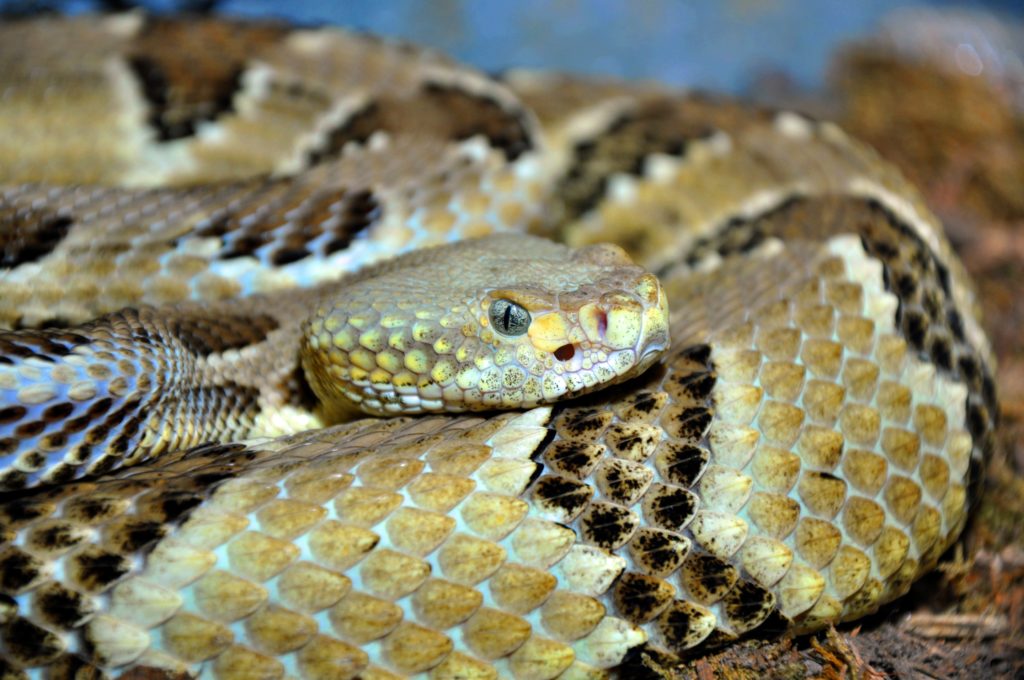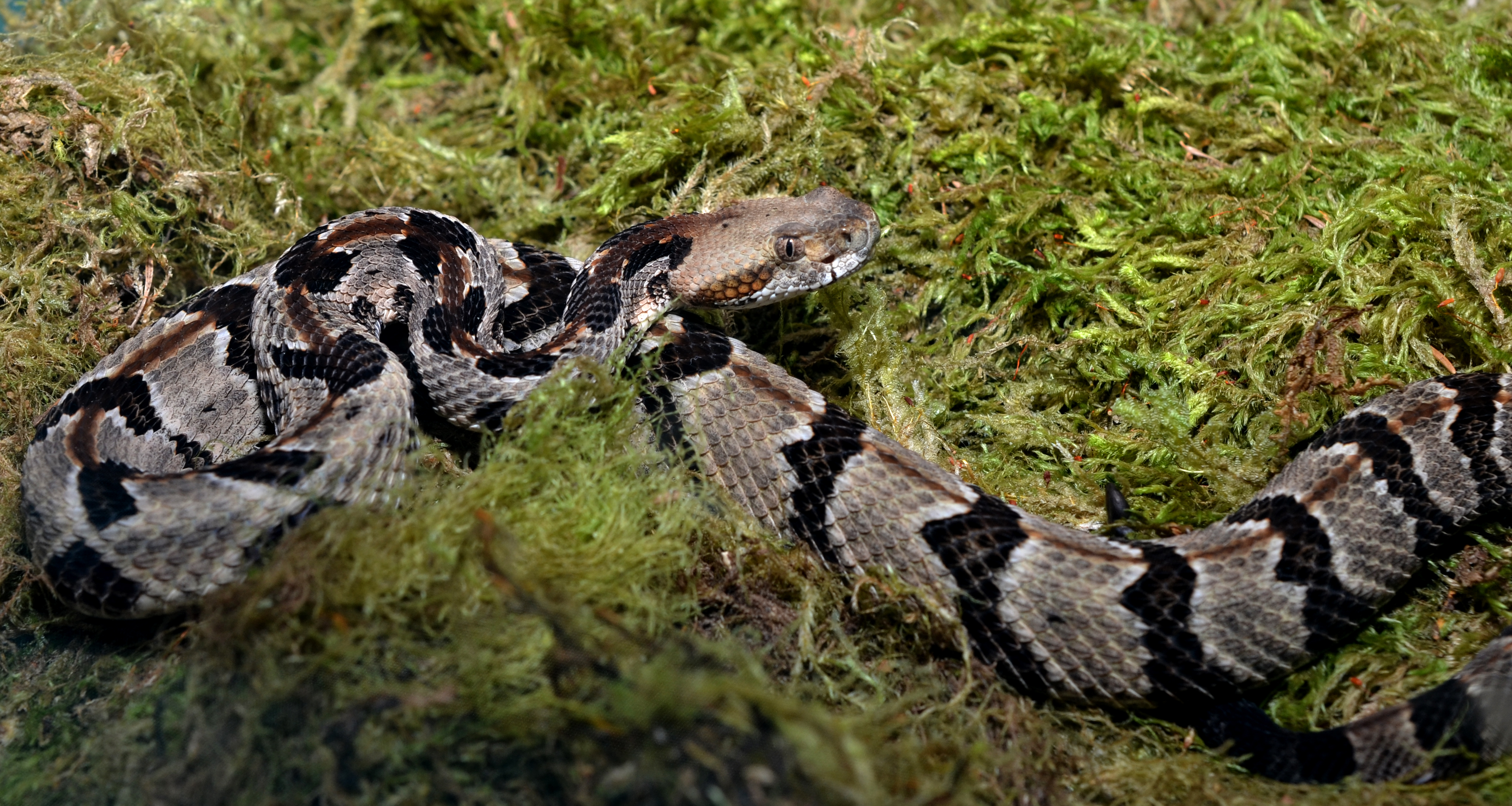Our Snakes Have A Superpower!
By Thomas Waser In Cold Blooded Creatures, UncategorizedApril 4, 20117
Residing in our Mountain Cove habitarium, the canebrake rattlesnake is one of the VLM’s pit viper species. Being a venomous snake, the rattlesnake has a formidable reputation and many people regard this reptile with fear and caution due to its potentially life-threatening toxin. But upon inspection, our canebrake rattlesnake often appears quite lazy, curled up and not moving for hours or days at a time. This is all part of the pit viper hunting strategy; as ambush predators, rattlesnakes lie in wait for long periods of time, then strike out with a venomous bite when prey wanders just within reach. To ensure the snake doesn’t miss a meal, it employs a real-life superpower.


Photo Credit: Karl Rebenstorf
A 2016 study found that most snakes, including rattlesnakes, are capable of reaching mind-boggling speeds when striking at prey. Their super-speed is almost impossibly fast and each strike lasts between 44 and 70 milliseconds! By comparison, it takes you almost 200 milliseconds just to blink your eyes once! Their prey doesn’t stand a chance; at such speeds, the snake will have landed the killing blow before the target even realizes it is under attack. It is a sound strategy as it ensures the snakes will almost always get its meal.


Photo Credit: Karl Rebenstorf
This super fast movement is all thanks to a ton of muscles. While you have between 700 and 800 muscles in your whole body, even the smallest snake has between 10,000 and 15,000 muscles in its body. Their ability to strike at high speeds likely comes from their muscles being connected, building up huge quantities of energy and snapping out at high speed like a rubber band. But because the snake moves so fast, it experiences forces that would make a human (and most other animals) lose consciousness! A striking snake may experience up to 30G (30 times the force of gravity)…even the most seasoned fighter jet pilot would lose consciousness shortly after reaching 10G!


Photo Credit: Karl Rebenstorf
Moving at high speeds, snakes impact their prey with incredible force, so they must have some means of protecting their brain. The brain is a very sensitive organ and can be easily hurt by high speeds and impacts; this is why American football players wear helmets to reduce the risk of concussions or other injuries. The unique shape of a snake’s skull protects the brain during high-speed collisions.
“The skull of a snake is incredibly kinetic and mobile. There are so many different joints which allow stretching and mobility. It could be that if one part lands first, it can absorb a little bit of shock before that’s transferred to another part, so the snake can absorb the impact of the strike far easier and it doesn’t concuss them.” -David Penning, University of Louisiana (Source)


Photo Credit: Karl Rebenstorf
Researchers are now studying how snakes tolerate large forces to see if these tactics could help protect humans from powerful forces. Just think, by studying how snakes attack, we might be able to create cars that better protect drivers and passengers during bad accidents! It’s just one more example in the long list of ways even the most feared snakes are helping people. In the meantime, be sure to come visit the Canebrake Rattlesnake, the real-life superhero of the VLM!







No Comment
Sorry, the comment form is closed at this time.